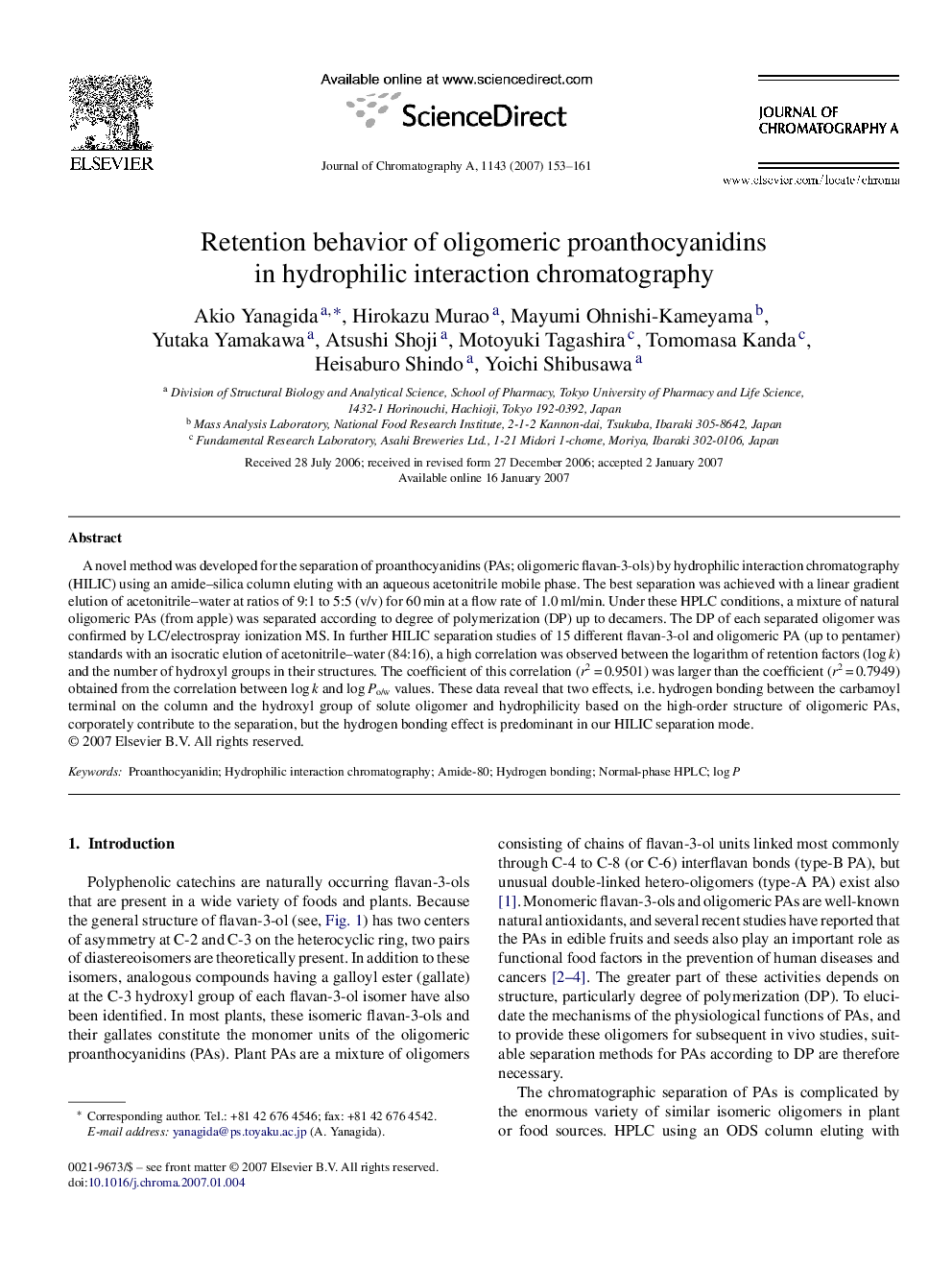| Article ID | Journal | Published Year | Pages | File Type |
|---|---|---|---|---|
| 1211163 | Journal of Chromatography A | 2007 | 9 Pages |
A novel method was developed for the separation of proanthocyanidins (PAs; oligomeric flavan-3-ols) by hydrophilic interaction chromatography (HILIC) using an amide–silica column eluting with an aqueous acetonitrile mobile phase. The best separation was achieved with a linear gradient elution of acetonitrile–water at ratios of 9:1 to 5:5 (v/v) for 60 min at a flow rate of 1.0 ml/min. Under these HPLC conditions, a mixture of natural oligomeric PAs (from apple) was separated according to degree of polymerization (DP) up to decamers. The DP of each separated oligomer was confirmed by LC/electrospray ionization MS. In further HILIC separation studies of 15 different flavan-3-ol and oligomeric PA (up to pentamer) standards with an isocratic elution of acetonitrile–water (84:16), a high correlation was observed between the logarithm of retention factors (log k) and the number of hydroxyl groups in their structures. The coefficient of this correlation (r2 = 0.9501) was larger than the coefficient (r2 = 0.7949) obtained from the correlation between log k and log Po/w values. These data reveal that two effects, i.e. hydrogen bonding between the carbamoyl terminal on the column and the hydroxyl group of solute oligomer and hydrophilicity based on the high-order structure of oligomeric PAs, corporately contribute to the separation, but the hydrogen bonding effect is predominant in our HILIC separation mode.
